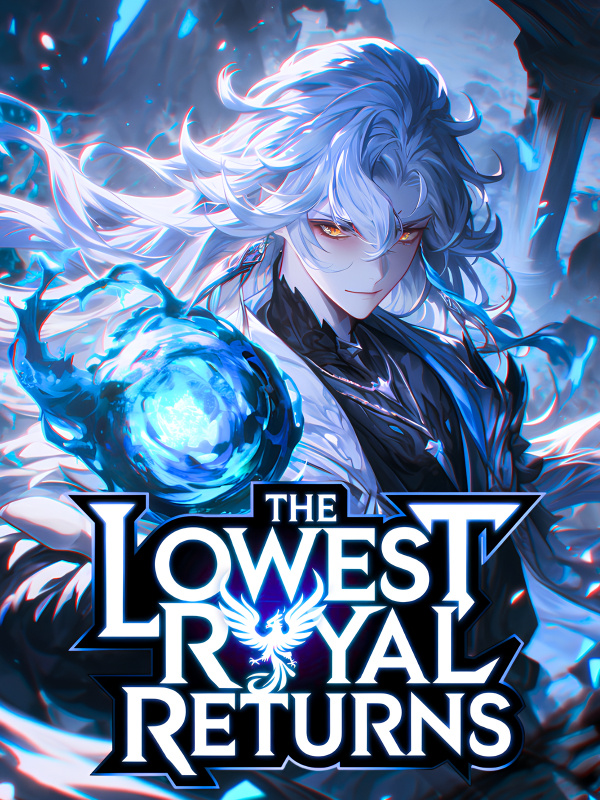©NovelBuddy
Super Genius DNA-Chapter 207: Laboratory Seven
Chapter 207: Laboratory Seven
—Is that actually possible?
Tanya Manker sounded shocked over the phone.
—You statistically analyzed it, right?
“Of course. I can’t count every single ant by myself.”
—But the fact that you’re so confident in the numbers means that you think the statistics were accurate.
“That’s right.”
—I guess you could get close if you divide the habitats that are representative of Guangdong into certain sizes, gather enough samples, and count the number of organisms to calculate an average. But even if you are relatively accurate about the number of organisms in each unit, it’s hard to count the actual number of habitats because there could be a number of smaller groups. It’s not like insects have a distinct habitat in the first place, which would drastically change the total number of organisms. Do your numbers take that into account?
“Of course.”
—...Still, I can’t accept it. You said you took the insects into account, but at that scale, there’s going to be errors in a habitat that big no matter how hard you counted. You can’t possibly find every single habitat for every single insect, can you?
“It depends on how much background knowledge you have in biology.”
—Pardon?
“Back in the 1960’s, when livestock farming was at its peak in Australia, they had a huge problem about the disposal of animal waste. But European countries with similar climates and similar farms didn’t have that problem, even though they didn’t have any treatment facilities,” Young-Joon said. “The reason was the difference in the distribution and species of beetles: European beetles lived off the dung of livestock, while the Australian beetles ate humus and dead leaves in the forest.”
—...
“Australian ecologists solved the problem by bringing those beetles from Europe. They deeply studied the ecology of the beetles in Europe to predict the impact of the beetles on the Australian environment, but they learned another interesting fact in the process,” Young-Joon said. “The distribution of beetles was different between land with and without livestock farms, even on neighboring European farms with similar climate, soils, and weather. There weren’t a lot of beetles on farms that mainly did agriculture; the samples they looked at showed the livestock farms had ten thousand to a hundred thousand times more beetles than agricultural land.”
—Because if they don’t do livestock farming, there’s no dung to feed those beetles?
“Exactly. There were basically no beetles in the agricultural areas, and at this point, you can treat agricultural areas as statistical noise when calculating beetle numbers in a country.”
—In that case, I guess it would give you a number that’s very close to the answer. So, you’re saying that you can find all the habitats if you track the livestock areas where there is a lot of animal waste?
“You only need to look at two things to figure out the habitat. The first and most important thing is prey; if you track that, you can identify the habitats, provided the other factors are average. If you draw the distribution of the food chain by species and find the habitat of a few species, you can quickly track the rest by drawing a rough sketch. This is the most popular method of biological resource survey used in insect ecology.”
—Hm…
“The second thing to consider would be pollution. In Korea, it was common to see insects like dung beetles in the countryside, but they disappeared when we started feeding antibiotics to livestock, as those antibiotics remained in the dung and prevented the beetle from eating it. Now, dung beetles are almost extinct, and the Ministry of Environment even bought them from Mongolia a few years ago at one million won per insect to rebuild the environment.”
—...
“Insects are usually short-lived, have quick generation turnover, and a relatively small radius of activity, which makes them very sensitive to changes in food availability or the environment. In other words, you can easily identify their habitats if you track that.”
—But what about the population? Even if you can accurately figure out the habitat, isn’t it difficult to specify the number of organisms living in it?
“It’s not difficult if you look at it from the perspective of biomass. No matter how many people you put in a four-seater, the maximum number would be about six people. The Spotted Ants only build their nests under a shrub called Citrus unshidrope, and the size of the shrub is always directly proportional to the size of the nest. The liquid that the tree exudes acidifies the surrounding soil, which is the most suitable environment for them to build their homes.”
—...
“It’s similar to how flies are attracted to grape skins and bacteria grow in a solution of LB broth. Just as the amount of broth determines the amount of bacteria that can grow, you can get an accurate number of flies within a certain range, if you know your biology.”
—But even so, it’s a statistic. You can never be one hundred percent sure.
“You can’t be one hundred percent sure in most of biology,” Young-Joon said. “I have a good idea. We use this data and AI to model the ecosystem in Guangdong, and then we manipulate some variables to give it a test drive.”
—And then you’ll start the mosquito extinction project?
“That’s right,” Young-Joon said. “If you join us, we’ll give you this data: the estimated population and habitat distribution of thirty thousand species of insects and animals in Guangdong, and the structure of the biological pyramid.”
* * *
In reality, Young-Joon tracked the data a little differently. He asked the minister of the Ministry of Health to survey the ecological map of Guangdong, but he also used Rosaline’s Simulation Mode. It was just after he met with the editor of Nature at the hotel before his return flight.
Young-Joon asked Rosaline to use Simulation Mode.
—Are you crazy?
Rosaline was shocked.
—A complete survey of the habitats and populations of all creatures in Guangdong?
“Will it be difficult?”
—Simulation Mode can track specific organisms on a regional scale, but there are too many species! I wouldn’t have enough fitness to handle that many.
“Really?”
—How can I track trillions of species in one night? And it’s tricky for me to tell you about some of them because 99.9 percent of them don’t have a name since humanity hasn’t discovered them yet. Should I call them Number One, Number Two, and so on?
“Wait, what do you mean by trillions?”
—You wanted me to survey every species, right?
There was a miscommunication. Chills ran down Young-Joon’s neck.
“So… By all species, you meant…”
—I think there are about three thousand species in this room right now, especially the ones on your skin and in your gut… It looks like there’s about three hundred that don’t have names.
“Ack! No. Exclude microorganisms,” Young-Joon exclaimed.
—I shouldn’t include microorganisms?
“Of course. I’m sorry, you were thinking about this on a completely different scale. How about we start with insect species?”
Rosaline tilted her head in confusion.
—I don’t think that would be proper ecology. Don’t you want a database with all the ecological information of the area?
“Yeah, but including information about microorganisms will make it hard to research, and there won’t be a way to publish it.”
—Unnamed One, Unnamed Two, Unnamed Three…
“... It’s okay. Let’s start with insects. And the scale of the microbiome is probably too big to affect the extinction of mosquitoes, so we won’t have to consider it.”
—Are you sure?
“Can it cause problems?” Young-Joon asked nervously.
—No. I’m kidding.
Rosaline smiled.
“You know, you’re becoming more human, making jokes like this.”
—I’ll take it as a compliment.
Rosaline’s body emitted a white light, followed by a rise of steam; she was dividing her cells. Rosaline began to divide into hundreds of trillions of microscopic cells, and she scattered them everywhere. As they spread throughout Guangdong Province, an enormous amount of sensory information poured into Young-Joon’s brain.
“Ack…”
Young-Joon sat down on the sofa with a short groan.
—Hang in there.
Rosaline said.
* * *
After ten days, Tanya Manker came to A-GenBio. However, Tanya Manker wasn’t the only important guest at the newly renovated headquarters. There were also the director of the SGSW International Research Center and developers who were responsible for software development for SG Electronics. They had already worked with A-GenBio during the GWAS project.
“I heard that it was the same building as A-Gen, but somehow it feels much bigger,” said Min Byung-Jin, the director of SGSW, as he took the elevator with the developers.
“Well, they’re now one of the biggest companies in the world in terms of market capitalization. They’re bigger than SG Electronics,” said Park Hyun, a developer.
“It was a godsend that we invested in A-Gen back in the day and kept our shares. There’s nothing we can do about the management because Doctor Young-Joon owns most of the shares, but we can still participate to some extent.”
Ding!
The elevator stopped on the eighth floor. Tanya Manker and Kim Young-Hoon stepped inside.
“Long time no see, Mr. Kim,” said Min Byung-Jin as he held out his hand.
“It’s been a while. How are you?”
Kim Young-Hoon shook his hand, and then quickly introduced Tankya Manker to him.
“This is Tanya Manker, the developer and founder of GRO, an artificial intelligence program that predicts climate and crops.”
“Nice to meet you,” Tanya Manker said as she shook Min Byung-Min’s hand.
“I heard about your program when the red mold disaster happened in the United States. We’re also developing AI, but yours seems like it’s on another level, to be able to predict something like that.”
“That was also the first time I knew my program could do that,” Tanya Manker said, chuckling.
Soon, the elevator stopped on the fourteenth floor, and Kim Young-Hoon led the group to the conference room in Room 1408.
Click!
The door opened before they could enter. Secretary Yoo Song-Mi saw them as she opened the door and greeted them.
“Welcome. Mr. Ryu is waiting inside.”
“Oh, are we late?” Kim Young-Hoon asked as he glanced at his watch.
“No, he arrived three hours ago to organize the data,” Yoo Song-Mi said. “And I’m actually the one who’s late… I made a mistake because there was a mix-up because of the company merger. I’ll come back with some refreshments.”
She quickly ran towards the elevator.
Kim Young-Hoon opened the door and went inside.
“My god…”
Kim Young-Hoon’s jaw dropped, as did the developers and Tanya Manker.
There was a reason why Young-Joon chose this room, as twelve large screens lined the front and walls of the room. But it wasn’t the screens that surprised them; it was the dense Excel data that was being presented. It was data on all of Guangdong’s biological resources.
“Come in,” Young-Joon said. “Let’s get started.”
New novel chapt𝒆rs are published on free(w)ebnovel(.)com







